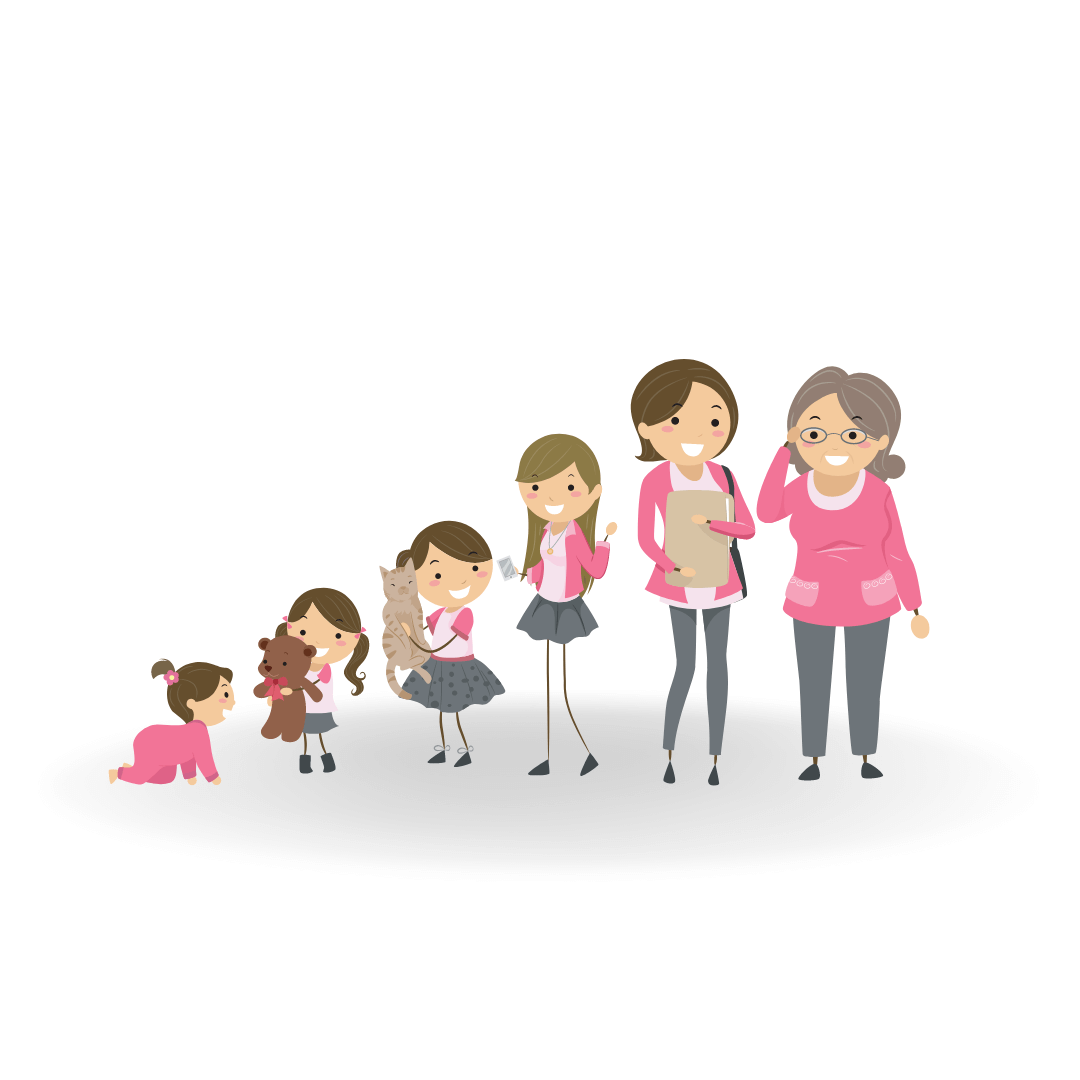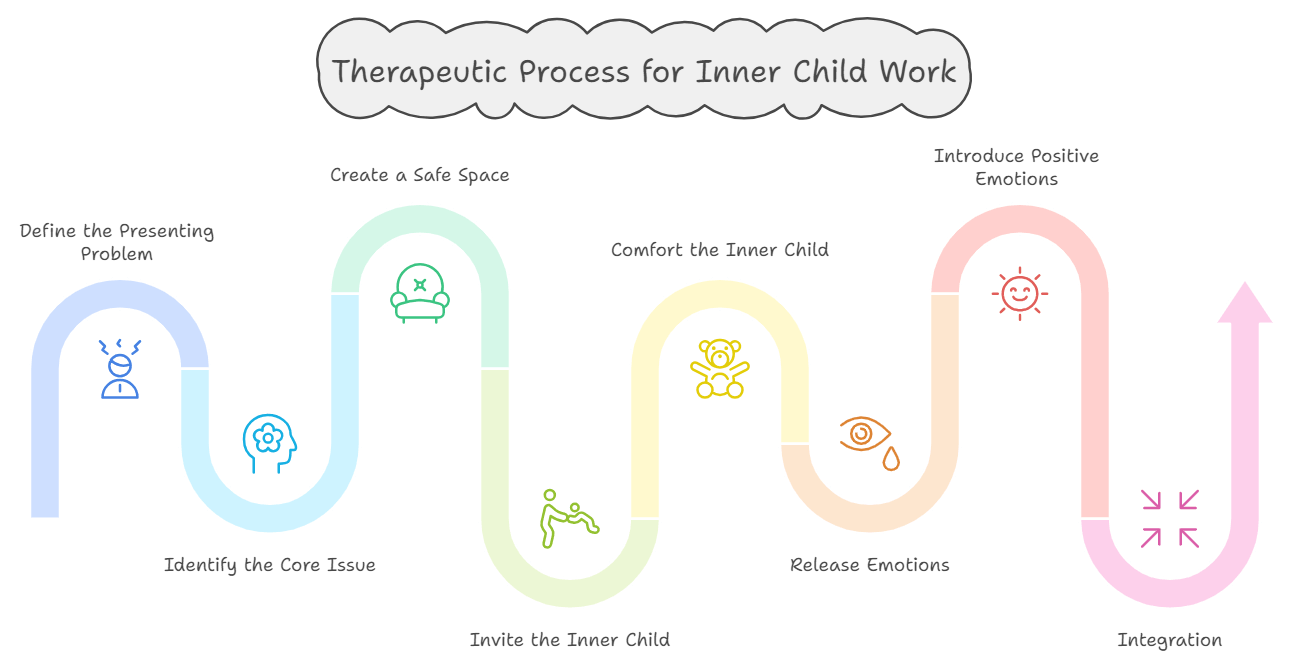Are your clients struggling with persistent emotional issues that seem to stem from unresolved childhood experiences?
Despite your best efforts, traditional approaches may not fully address the deep-rooted traumas affecting their present lives.
Inner child therapy offers a transformative approach to heal these underlying wounds. This article will explore how helping clients reconnect with their inner child can enhance your practice, providing you with practical steps and integration tips for deeper emotional healing.
What is Inner Child Healing?
Inner child therapy, also known as inner child healing, is a therapeutic process designed to help clients reconnect with and heal their “inner child” impacted by past traumas or unresolved developmental stages.
This approach addresses deep-seated emotional issues from childhood, enabling individuals to integrate these aspects into their adult lives healthily and productively.
Understanding the Development of the Inner Child
To grasp the concept of the inner child, it’s useful to refer to Erik Erikson’s stages of psychosocial development. Erikson’s model outlines the various psychosocial crises individuals face at different stages of life. If these crises are not successfully resolved, a part of the individual remains fixated at that stage, continuing to affect them into adulthood.
Key Stages and Fixations

Trust vs. Mistrust (Infancy)
- Crisis: Trust vs. Mistrust
- Impact: If an infant experiences mistrust, they may grow up finding it difficult to trust others, affecting relationships and social interactions.
Autonomy vs. Shame and Doubt (Early Childhood)
- Crisis: Autonomy vs. Shame and Doubt
- Impact: Failure to develop a sense of autonomy can lead to feelings of shame and doubt, impacting confidence and independence.
Initiative vs. Guilt (Preschool Age)
- Crisis: Initiative vs. Guilt
- Impact: Struggles in this stage may result in a lack of initiative and an overbearing sense of guilt, affecting ambition and creativity.
Industry vs. Inferiority (School Age)
- Crisis: Industry vs. Inferiority
- Impact: If not resolved, this can lead to feelings of inferiority and a lack of confidence in abilities, influencing academic and professional achievements.
Identity vs. Role Confusion (Adolescence)
- Crisis: Identity vs. Role Confusion
- Impact: Unresolved identity crises can lead to confusion about one’s role in life, affecting career choices and personal relationships.
Causes of Inner Child Development

- Fixation and the Inner Child
Fixations are a key factor in the formation of the inner child. When an individual is unable to navigate a particular stage successfully, a part of them remains anchored in that developmental period. This unresolved aspect continues to influence their behavior and emotions. - Suppression of Intense Emotions
Another significant cause of inner child development is the suppression of intense negative emotions during childhood. When a child cannot cope with these emotions, they often suppress them, causing a part of their psyche to remain stuck in that emotional state.
Real-World Examples
Loneliness and Unloved Feelings
- A client who felt lonely and unloved as a child may continue to feel this way as an adult, despite having a loving family and supportive friends.
- They might acknowledge the irrationality of their feelings but still be triggered by minor disagreements.
Childlike Tantrums in Adults
- Some adults may throw tantrums in certain situations, similar to a small child.
- They often express confusion about their behavior, feeling as though something inside them takes over, making it difficult to control their responses.
Recognizing the Inner Child
Understanding the inner child involves recognizing patterns such as:
- Trust Issues: Difficulty in trusting others stemming from unresolved early mistrust.
- Feelings of Inferiority: Persistent feelings of inadequacy due to unresolved crises of inferiority.
- Emotional Outbursts: Childlike emotional reactions in adults indicating unresolved emotional suppression.
As a psychologist, identifying these patterns can help address unresolved issues from developmental stages, guiding your therapeutic approach to foster emotional and psychological healing.
Step-by-Step Guide to Inner Child Healing
- Define the Presenting Problem: Use the format “I feel… about… when…” to articulate the client’s issues.
- Identify the Core Issue: Employ delayering techniques to uncover the core emotional issue and the initial traumatic event.
- Create a Safe Space: Guide the client to imagine a safe, comfortable environment.
- Invite the Inner Child: Encourage the client to visualize and connect with the inner child associated with the core issue.
- Comfort the Inner Child: Have the client reassure the inner child, expressing care and protection.
- Release Emotions: Use techniques like magical balloons or Hypnodrama to help the child release stuck emotions.
- Introduce Positive Emotions: Replace negative emotions with positive ones through symbolic gifts or activities.
- Integration: Suggest the inner child grow to the client’s current age and integrate, creating a sense of completion.
- Repeat with Other Inner Children: Address other inner children stuck with similar emotions until all are integrated.
- Future Pacing: Guide the client to visualize positive changes in their life post-therapy.

Combining Inner Child Therapy with Other Techniques
While inner child therapy is highly effective on its own, combining it with other therapeutic techniques can accelerate and enhance results. Techniques like N-step reframing, Hypnodrama, and various metaphors can provide additional layers of healing and insight.
Advanced Training in Inner Child Therapy
For psychologists and social workers interested in mastering inner child therapy and integrating it with other powerful techniques, the Cognitive Hypnotic Psychotherapy Diploma offers comprehensive training. This program covers Hypnodrama, N-step reframing, Emotional Empowerment techniques, and more, providing a robust toolkit for personalized, transformational therapy.
Conclusion
Inner child therapy is a transformative approach that addresses deep-rooted emotional issues from childhood. By integrating this method with other therapeutic techniques, psychologists and social workers can offer clients faster and more profound healing.
Detailed case studies and empirical evidence underscore its effectiveness. For those looking to enhance their therapeutic practice, exploring advanced training through the Cognitive Hypnotic Psychotherapy Diploma is highly recommended.

